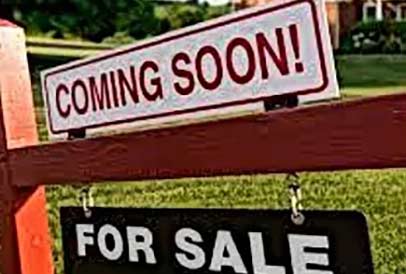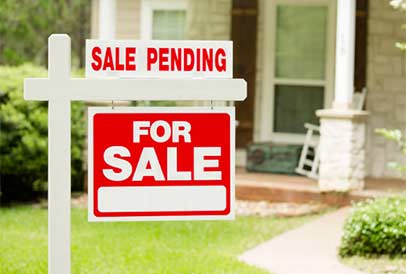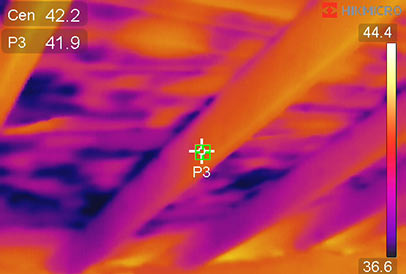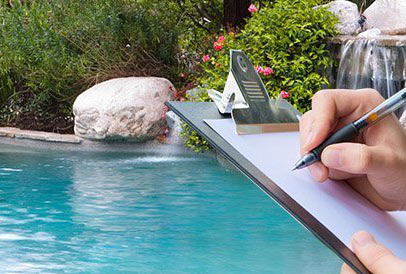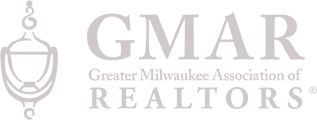State of Wisconsin Home Inspectors Code
Subchapter IV — Standards of Practice
SPS 131.31 General requirements.
(1) A home inspector shall perform a reasonably competent and diligent home inspection of the readily accessible installed systems and components required to be inspected under s. SPS 131.32 to detect observable conditions of an improvement to residential real property. A reasonably competent and diligent home inspection is not required to be technically exhaustive.
(2) This section does not require a home inspector to do any of the following:
(a) Offer a warranty or guarantee of any kind.
(b) Calculate the strength, adequacy or efficiency of any component of an improvement to residential real property.
(c) Enter any area or perform any procedure that may damage an improvement to residential real property or a component of an improvement to residential real property, or enter any area or perform any procedure that may be dangerous to the home inspector or to other persons.
(d) Operate any component of an improvement to residential real property that is inoperable.
(e) Operate any component of an improvement to residential real property that does not respond to normal operating controls.
(f) Disturb insulation or move personal items, furniture, equipment, vegetation, soil, snow, ice or debris that obstructs access to or visibility of an improvement to residential real property or a component of an improvement to residential real property.
(g) Determine the effectiveness of a component of an improvement to residential real property that was installed to control or remove suspected hazardous substances.
(h) Evaluate acoustic characteristics of a component of an improvement to residential real property.
(i) Project or estimate the operating costs of a component of an improvement to residential real property.
(j) Predict future conditions, including the failure of component of an improvement to residential real property.
(k) Inspect for the presence or absence of pests, including rodents, insects and wood-damaging organisms.
(L) Inspect cosmetic items, underground items or items not permanently installed.
(m) Inspect for the presence of any hazardous substances.
(n) Disassemble any component of an improvement to residential real property, except for removing an access panel that is normally removed by an occupant of residential real property.
(3) This section does not prohibit a home inspector from doing any of the following:
(a) Reporting observations or conditions in addition to those required under this section.
(b) Excluding a component of an improvement to residential real property from the inspection, if requested to do so by his or her client.
(c) Engaging in an activity that requires an occupation credential if he or she holds the necessary credential.
History: Cr. Register, July, 1999, No. 523, eff. 8-1-99; correction in (1) made under s. 13.92 (4) (b) 7., Stats., Register November 2011 No. 671; CR 14-010: renum. 131.31 from SPS 134.02 and am. (1) Register August 2014 No. 704, eff. 9-1-14.
SPS 131.32 Mechanical and structural components included in a home inspection. A reasonably competent and diligent home inspection shall meet the standards in subs. (1) to (11) and shall include an inspection of, and report on, all of the following items that are present on the property at the time of the home inspection:
(1) Foundations. A home inspector shall observe and describe the type and condition of the foundation.
(2) Columns. A home inspector shall observe and describe the type and condition of columns.
(3) Flooring systems. A home inspector shall observe and describe the type and condition of flooring systems.
(4) Roofs.
(a) A home inspector shall observe and describe the condition of all of the following:
1. Roof coverings, including type.
2. Roof drainage systems.
3. Flashings.
4. Skylights, chimneys and roof penetrations.
5. Signs of leaks or abnormal condensation on building components.
(b) A home inspector shall describe the methods used to observe the roof.
(c) A home inspector is not required to do any of the following:
1. Walk on the roofing.
2. Observe attached accessories, including, but not limited to, solar systems, antennae and lightning arrestors.
3. Observe internal gutter and downspout systems and related underground drainage piping.
(5) Exteriors.
(a) A home inspector shall observe and describe the condition of all of the following:
1. Wall claddings, including type.
2. Flashings and trim.
3. Entryway doors and at least one window per side of a dwelling unit.
4. Garage door operators, including whether any garage door operator automatically reverses or stops when meeting reasonable resistance during closing.
5. Decks, balconies, stoops, steps and porches including railings.
6. Eaves, soffits and fascias.
7. Grading, drainage, driveways, patios, walkways, and retaining walls that abut the dwelling unit.
(b) A home inspector shall operate all entryway doors, garage doors, and at least one window per side of a dwelling unit.
(c) A home inspector is not required to observe the following:
1. Storm windows, storm doors, screening, shutters, awnings, and similar seasonal accessories.
2. Locks, latches or other security devices or systems.
3. Intercom systems.
4. Fences or privacy walls.
5. Insulation or vapor barriers in exterior walls.
6. Safety glazing.
7. Garage door operator remote control transmitters.
8. Geological or soil conditions.
9. Recreational facilities.
10. Out-buildings other than garages and carports.
11. Trees, shrubs and other vegetation.
(6) Plumbing systems.
(a) A home inspector shall observe and describe the condition of all of the following:
1. Interior water supply and distribution system, including piping materials, supports, fixtures, faucets, functional flow and drainage, leaks and cross connections.
2. Interior drain, waste and vent system, including traps, drain, waste, and vent piping, piping supports and leaks.
3. Hot water systems, including water heating equipment, normal operating controls, automatic safety controls, and the exterior surfaces of chimneys, flues, and vents.
4. Fuel storage and distribution systems, including interior fuel storage equipment, supply piping, venting, supports and leaks.
5. Sump pumps.
(b) A home inspector shall operate all plumbing fixtures, including their faucets and accessible exterior faucets attached to the dwelling unit.
(c) A home inspector is not required to do any of the following:
1. State the effectiveness of anti-siphon devices.
2. Determine whether the water supply and waste disposal systems are public or private.
3. Operate automatic safety controls or sump pumps equipped with internal or water dependent switches.
4. Operate any valve except water closet flush valves, fixture faucets and hose faucets.
5. Observe water conditioning systems, fire and lawn sprinkler systems, on-site water supply quantity and quality, on-site disposal systems, foundation drainage systems, or spas.
6. Observe the interior of flues, chimneys and vents, or solar water heating systems.
7. Observe any exterior plumbing components such as water mains or swimming pools.
8. Determine water temperature.
9. Determine the proper sizing, design or use of plumbing materials.
(7) Electrical systems.
(a) A home inspector shall observe and describe the condition of all of the following:
1. Service entrance conductors.
2. Service equipment, grounding equipment, main over current device.
3. Main and distribution panels, including their location.
4. Amperage and voltage ratings of the service, including whether service type is overhead or underground.
5. Branch circuit conductors, their over current devices, and the compatibility of their ampacities and voltages, including any aluminum branch circuit wiring.
6. The operation of a representative number of installed lighting fixtures, switches and receptacles located inside the house, garage and any exterior walls.
7. The polarity and grounding of all receptacles within 6 feet of interior plumbing fixtures, in the garage or carport, and on the exterior of inspected structures.
8. The operation of ground fault circuit interrupters.
9. The functionality of the power sources for smoke detectors.
(b) A home inspector is not required to do any of the following:
1. Insert any tool, probe or testing device inside the panels.
2. Test or operate any over current device except ground fault circuit interrupters.
3. Dismantle any electrical device or control other than to remove the covers of the main and auxiliary distribution panels.
4. Observe low voltage systems, telephones, security systems, cable TV, intercoms, or other ancillary wiring that is not a part of the primary electrical distribution systems.
5. Measure amperage, voltage or impedance.
(8) Interiors.
(a) A home inspector shall observe and describe the condition of all of the following:
1. Walls, ceilings and floors.
2. Steps, stairways, balconies and railings.
3. Counters and all sink base cabinets.
4. A random sample of doors and windows.
5. Separation walls, ceilings, and doors between a dwelling unit and an attached garage or another dwelling unit.
6. Signs of water penetration into the building or signs of abnormal or harmful condensation on building components.
(b) A home inspector is not required to observe any of the following:
1. Paint, wallpaper, and other cosmetic finish treatments on the interior walls, ceilings and floors.
2. Carpeting.
3. Draperies, blinds or other window treatments.
4. Household appliances.
5. Recreational facilities or another dwelling unit.
(9) Heating systems.
(a) A home inspector shall observe and describe the condition of all of the following within a permanently installed heating system:
1. Heating equipment and distribution systems.
2. Normal operating controls and energy source.
3. Automatic safety controls.
4. Exterior surfaces of chimneys, flues and vents.
5. Solid fuel heating devices.
6. The presence of an installed heat source in each room.
(b) A home inspector shall operate the systems using normal operating controls and open readily accessible access panels provided by the manufacturer or installer for routine homeowner maintenance.
(c) A home inspector is not required to do any of the following:
1. Operate heating systems when weather conditions or other circumstances may cause equipment damage.
2. Operate automatic safety controls.
3. Ignite or extinguish fuel fires.
4. Observe the interior of flues, fireplace insert flue connectors, humidifiers, electronic air filters, or the uniformity or adequacy of heat supply to the various rooms.
5. Observe a heat exchanger unless it is readily observable and normally accessible to an occupant of a dwelling unit.
(10) Central air conditioning.
(a) A home inspector shall observe and describe the condition of all of the following:
1. Cooling and air handling equipment, including type and energy source.
2. Normal operating controls.
3. The presence of an installed cooling source in each room.
(b) A home inspector shall operate the systems, using normal operating controls, and open readily accessible access panels provided by the manufacturer or installer for routine homeowner maintenance.
(c) A home inspector is not required to do any of the following:
1. Operate cooling systems when weather conditions or other circumstances may cause equipment damage.
2. Observe non-central air conditioners.
3. Observe the uniformity or adequacy of cool-air supply to the various rooms.
4. Operate electronic air filters.
5. Observe the pressure of the system coolant or determine the presence of leakage.
6. Test the electrical current drawn by the unit.
(11) Insulation and ventilation.
(a) A home inspector shall observe and describe the condition of all of the following:
1. The presence or absence of insulation in unfinished spaces.
2. Ventilation of attics and foundation areas.
3. Kitchen, bathroom, and laundry venting systems.
(b) A home inspector is not required to observe any of the following:
1. Concealed insulation.
2. Venting equipment which is integrated with household appliances.
History: Cr. Register, July, 1999, No. 523, eff. 8-1-99; CR 14-010: renum. 131.32 from SPS 134.03 Register August 2014 No. 704, eff. 9-1-14.
SPS 131.33 Contents of a home inspection report.
(1) After completing a home inspection, a home inspector shall submit a written report to a client that does all of the following:
(a) Lists the items described in s. SPS 131.32 that a home inspector is required to inspect.
(b) Lists the items described in s. SPS 131.32 that a home inspector has inspected.
(c) Describes the condition of any item identified in s. SPS 131.32.
(d) Describes any defect that is detected by the home inspector identified in s. SPS 131.32 that, if not repaired, will have significant adverse effect on the life expectancy of the identified item.
(e) Lists any material adverse facts that a home inspector has knowledge of or has observed.
(2) A home inspector is not required to report on any of the following aspects of items identified in s. SPS 131.32:
(a) Their life expectancy.
(b) The reason for the necessity of a major repair.
(c) The method of making any repair or correction, the materials needed for any repair or correction, or the cost of any repair or correction.
(d) The suitability for any specialized use of an improvement to residential real property.
(e) Whether they comply with applicable regulatory requirements.
(2m) A home inspector is not required to use the term “defect” in describing a defect in the written home inspection report described in this section.
(3) A home inspector may not report in writing or verbally on any of the following:
(a) The market value or marketability of a property.
(b) Whether a property should be purchased.
(3m) A home inspector may not use the term “defect” in the written home inspection report described in this section unless that use is consistent with s. SPS 131.02 (6m).
(4) A home inspector is not required to retain inspectors or investigators to perform follow-up inspections or investigations of any material adverse facts that a home inspector has knowledge of or has observed under sub. (1) (d).
History: Cr. Register, July, 1999, No. 523, eff. 8-1-99; correction in (1) (a), (b), (c), (d), (2) (intro.) made under s. 13.92 (4) (b) 7., Stats., Register November 2011 No. 671; CR 14-010: renum. 131.33 from SPS 134.04 and am. (1) (a), (b) Register August 2014 No. 704, eff. 9-1-14; corrections in (1) (c), (d), (2) (intro.) made under s. 13.92 (4) (b) 7., Stats., Register August 2014 No. 704; EmR1822: emerg. am. (1) (d), cr. (2m), (3m) eff. 9-23-18; CR 18-076: am. (1) (d), cr. (2m), (3m) Register May 2019 No. 761, eff. 6-1-19.
Are you a texter?
Text Your Inspection Request to..
Please Be Sure to Include:
Your Name, Address & Requested Inspection Date & Time
Are you a texter
Text Your Inspection Request to..
Please Be Sure to Include
Your Name, Address & Requested Inspection Date & Time
Affiliations

